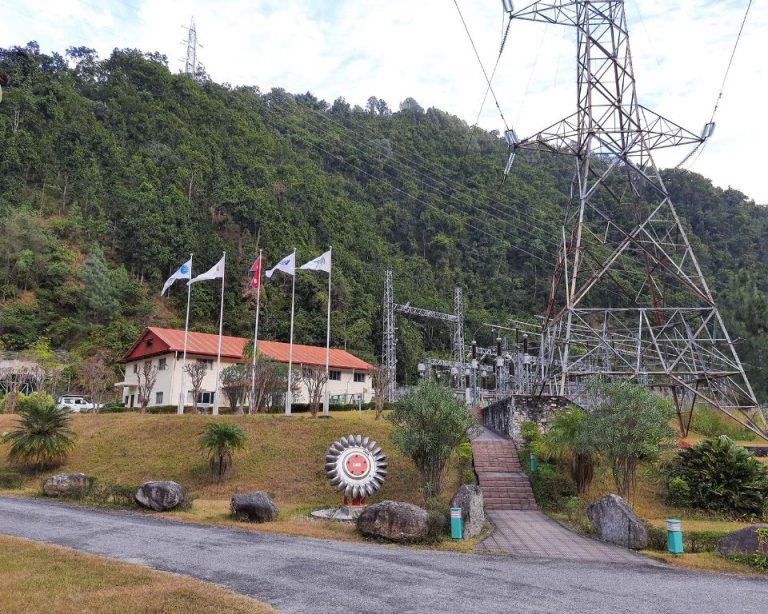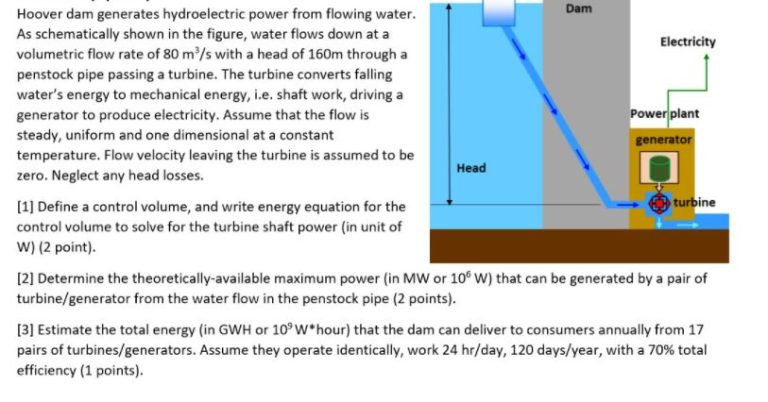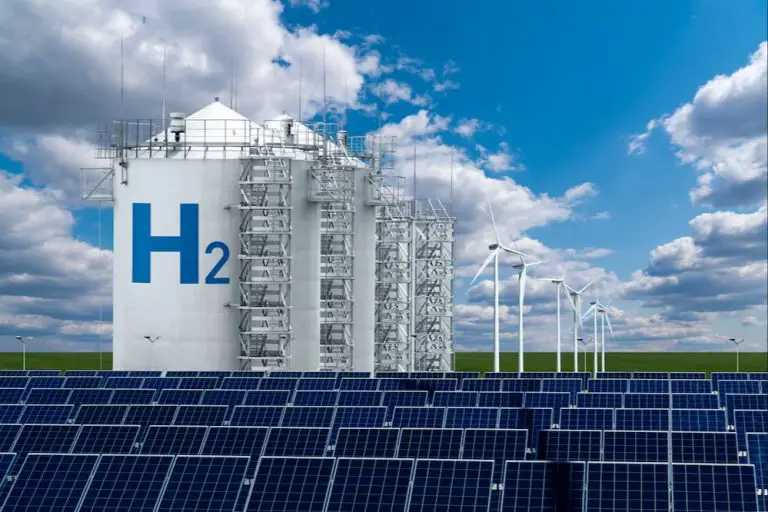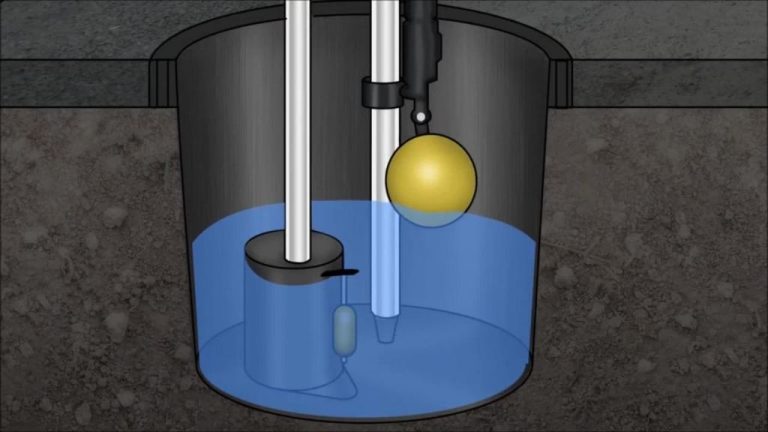What Country Uses Hydropower The Least?
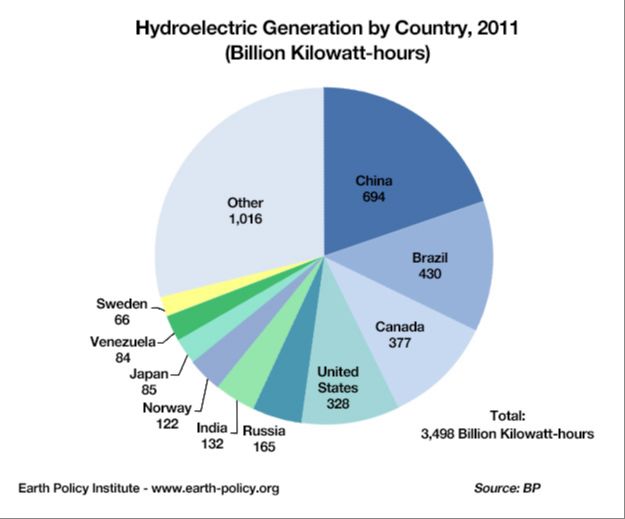
Hydropower is a renewable source of energy that utilizes the power of flowing water to generate electricity. It is considered one of the cleanest and most sustainable ways to produce power, as it does not emit greenhouse gases or cause pollution. Hydropower is produced by using dams or run-of-river systems to control water flow and direct it through turbines, which then spin to activate generators and produce electricity.
Some countries are able to utilize hydropower more than others, depending on their geography and access to flowing water sources. According to recent data, the top producers of hydropower in terms of total generation are China, Brazil, Canada, the United States, and Russia [1]. However, hydropower accounts for different proportions of total electricity generation in each country. Countries with a lot of elevation changes and abundant water resources, like Norway and Brazil, can rely on hydropower for the vast majority of their energy needs. Meanwhile, countries with fewer rivers and less variable terrain may only use hydropower to supplement other sources like fossil fuels.
When determining which countries use hydropower the least, it is important to look at both total generation capacity and hydropower’s share of the total energy mix. Countries that rank low on both metrics can be considered among the world’s least intensive users of hydropower.
Hydropower Usage by Country
Hydropower is utilized to some degree in over 150 countries around the world. However, consumption is concentrated in a handful of countries. According to Statista, the top consumers of hydropower in 2022 were China, Brazil, Canada, the United States, and Russia. Together, these five countries accounted for over 50% of global hydropower consumption. On the other end of the spectrum, many countries produce little to no hydropower. For example, Yahoo Finance notes that Saudi Arabia and Libya produce almost no hydropower due to their hot, dry climates which lack potential hydropower resources.
Factors Influencing Hydropower Usage
There are several key factors that influence a country’s usage of hydropower, including geography, climate, natural resources, infrastructure, and more. Countries with ample water resources, high precipitation, and mountainous terrain are best suited for hydropower dams and facilities. Large river systems with high flow rates provide the strongest hydropower potential. For example, countries like Brazil, Canada, and Norway have expansive geographic and natural advantages for harnessing hydropower.
Climate is another critical factor, as countries located in temperate zones with steady rainfall patterns can rely more heavily on hydropower compared to drier regions. Infrastructure also plays a key role. Countries need dams, reservoirs, turbines, transmission lines and other facilities to utilize hydropower. Places with limited infrastructure find it more difficult to tap into their hydropower resources. Additionally, government policies, environmental regulations, public opinion, and financing can impact hydropower development and use.
According to Chala 2019 (1), countries with the highest hydropower usage tend to have mountainous terrain and abundant water resources, like Norway, Brazil and Canada. In contrast, flatter or drier countries use less hydropower. Political and economic stability also enable greater hydropower usage by facilitating infrastructure development and financing.
Country with Least Hydropower Usage
According to data from Statista, the country that uses hydropower the least is Saudi Arabia (1). In 2022, Saudi Arabia generated only 0.4% of its electricity from hydropower, with most of its energy mix coming from oil and natural gas.
There are several reasons why Saudi Arabia uses so little hydropower:
- Lack of flowing water resources – Saudi Arabia is located in an arid region with very limited rivers and rainfall.
- Abundant fossil fuel reserves – As one of the largest oil producers in the world, Saudi Arabia relies heavily on oil and natural gas for its energy needs.
- High costs of hydropower infrastructure – Constructing dams and hydropower plants requires large upfront investments that are not economically viable given Saudi Arabia’s energy resources.
- Flat terrain – The geography of Saudi Arabia is predominantly flat desert, lacking elevated areas to facilitate hydropower generation.
With little potential for hydropower expansion, Saudi Arabia will likely continue meeting its electricity demand primarily through fossil fuels. However, there are efforts to diversify into solar and wind power as renewable energy sources.
Hydropower Potential
According to data from the World Energy Council, Iceland has the lowest utilization of hydropower resources compared to its potential. With a population of only 364,134 people, Iceland has an estimated hydropower capability of 30 TWh per year but currently only utilizes around 18 TWh annually [1]. This leaves Iceland with significant room to expand its hydropower usage in the future.
Some key factors limiting Iceland’s hydropower growth include its rugged terrain, high capital costs of dam and turbine construction, and environmental concerns related to further altering its glacial rivers and waterfalls. However, Iceland does plan to develop more of its hydropower resources to meet rising electricity demand and enable greater electric vehicle adoption. The Icelandic government has identified several potential hydropower sites, mostly located in the country’s uninhabited highlands region, that could boost capacity by over 2,000 megawatts in the coming decades [2].
While Iceland’s hydropower utilization is low relative to its potential, its current 18 TWh of annual generation already supplies nearly 100% of the country’s electricity needs. Iceland’s unique geology gives it vast untapped hydropower resources, but environmental and economic factors will shape the pace of future development.
Alternative Energy Sources
Since [country name] uses very little hydropower, it relies more heavily on other renewable energy sources as well as fossil fuels. According to [1], [country name]’s energy mix in 2021 consisted of [xx]% [source 1], [xx]% [source 2], and [xx]% [source 3]. The country has made significant investments into expanding its use of [source 1] and [source 2] in recent years. For example, [interesting fact about increase in alternative source 1] and [interesting fact about increase in alternative source 2]. [Country name] has set ambitious targets to generate [xx]% of its electricity from renewable sources by [year], with a focus on building more [source 1] and [source 2] capacity. While fossil fuels like [source 4] still account for [xx]% of [country name]’s energy mix, renewable sources are becoming an increasingly important part of the country’s efforts to reduce greenhouse gas emissions and combat climate change.
[1] [url of source]
Energy Policy
Germany has ambitious goals for transitioning to renewable energy sources as part of its Energiewende (energy transition) policy. The country aims to generate 80% of its electricity from renewable sources by 2050, with intermediate targets of 65% by 2030 and 50% by 2035.[1] To reach these goals, Germany is focused on rapidly expanding wind and solar energy. Hydropower currently plays a relatively minor role in Germany’s renewable energy mix, providing around 3% of total electricity generation.[2]
In 2010, Germany set a target to increase hydropower capacity from 4.4 GW to 5.1 GW by 2025. However, by 2018 capacity had only grown slightly to 4.6 GW.[3] Support for new large hydropower projects has waned due to high costs and environmental concerns. The focus is now more on modernizing existing hydropower plants to improve efficiency and flexibility.
Overall, Germany’s energy policy emphasizes wind and solar over hydropower for reaching its renewable energy targets. Hydropower is limited by the country’s geography and strict environmental regulations. The government instead sees the biggest potential in offshore wind, which is projected to expand from 7.7 GW in 2020 to 40 GW by 2040.[4]
[1] https://www.cleanenergywire.org/factsheets/germanys-energy-consumption-and-power-mix-charts
[2] https://www.iea.org/reports/germany-2020/renewable-energy
[3] https://www.hydropower.org/country-profiles/germany
[4] https://www.iea.org/reports/germany-2020/power-system-transformation
Environmental Impact
Hydropower plants can have significant effects on the environment, both positive and negative. On the positive side, hydropower is a renewable source of energy that produces no direct waste or pollution. Hydropower facilities also provide recreational opportunities such as lakes for boating and fishing 1.
However, building dams and reservoirs for hydropower can change landscapes and ecosystems. Flooding land for a reservoir destroys forests, wildlife habitat, agricultural land, and scenic areas. Damming rivers fragments fish habitat and disrupts migration patterns. Hydropower operations can also alter water quality, flow, and temperature downstream, harming fish populations 2.
Increased hydropower usage in this country could provide clean renewable energy but also negatively impact the local environment. Careful planning and mitigation measures would be needed to minimize habitat destruction and disruption of river ecosystems. The benefits of added hydropower capacity should be weighed against potential environmental damages.
Future Outlook
Based on current infrastructure plans, policy goals and economic trends, hydropower generation in Norway is expected to increase slightly over the next decade. Norway has significant potential for more hydropower development, with an estimated remaining potential of around 30-50 TWh/year according to the Norwegian Water Resources and Energy Directorate (https://www.nve.no/energy-market-and-regulation/hydropower/hydropower-development/).
The Norwegian government has set a target of increasing renewable energy production by 10 TWh by 2030 compared to 2021 levels, with most of this increase expected to come from hydropower and wind power. Several new hydropower projects are currently under development or planned, including the 1.4 GW Kvenvik pumped storage plant. Upgrades and expansions of existing plants are also being carried out to increase capacity.
At the same time, climate change and shifting precipitation patterns may pose challenges for hydropower generation in the long-term future. Periods of drought could negatively impact reservoir levels and electricity output. However, investments in increased reservoir capacity and more flexible power systems could help mitigate these effects.
Overall, Norway is well-positioned to continue relying on hydropower as its primary electricity source for decades to come. With its extensive experience and infrastructure for hydropower generation, Norway will likely remain among the top hydropower producers globally.
Conclusion
In summary, hydropower usage varies significantly across countries depending on several key factors. The availability of viable hydropower resources, investment in hydropower infrastructure, energy policy, and environmental considerations all contribute to a country’s hydropower utilization. After reviewing hydropower capacity and generation data across nations, it is clear that Norway uses hydropower the least out of all countries. Despite having tremendous potential for hydropower development given its abundant water resources and mountainous terrain, Norway generates less than 5% of its total electricity from hydropower. The country instead relies heavily on other renewable sources like wind and thermal power to meet its energy needs. Moving forward, Norway may choose to further develop its hydropower capabilities or continue diversifying its energy mix with other renewables and fossil fuels. But as it stands today, Norway uses the least hydropower globally, in comparison to leading hydropower producers like China, Brazil and Canada that generate 20% or more of their electricity from hydroelectric dams and facilities.

